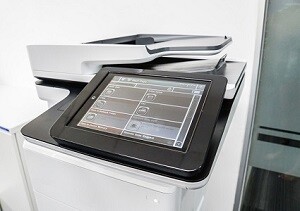 Choosing printers and scanners
Choosing printers and scanners
Selecting any equipment is becoming harder, and business printers and scanners are just about the most difficult of all hardware. There are so many manufacturers, and some of them have an almost endless number of models.
What features do you need?
- What size of paper do you need to print on?
- Do I need multiple paper trays for different sizes or headed paper?
- What thicknesses of paper do you use?
- Do you print on other media like transparencies?
- How many pages per month do you print?
- You will need double-sided printing to save paper.
- Do you need to print colour?
- Will it reliably print envelopes?
- Do I need it to be networked?
- Print from smartphones and tablets?
- If choosing a multifunction device with a scanner, do you need double-sided scanning and a multi-sheet feeder?
- How do you want to receive scans, by email, to a network share or a memory stick?
- Do I need built-in fax?
These are the easy things and on the product specification.
Other considerations when buying a printer
- What will it cost to buy?
- How much will it cost to run?
- Are low-cost compatible inks and toners available? Be very careful with this one.
- Where will it be installed?
- How difficult will it be to move it to its installed space?
- Will it be reliable?
- If it breaks, will it be expensive to fix?
- Will the manufacturer supply device drivers for future operating systems or for older computers you currently have
- Does the manufacturer give technical support if you have problems?
- Will the manufacturer provide firmware upgrades throughout the life of the product?
Choosing business printers and scanners is difficult, and the more you investigate, the more complicated it becomes as invariably compromises have to be made.
In reality, you discovered some of these things over the unit’s life, but research will avoid nasty surprises. Our general advice is to buy from a reputable manufacturer as they will give better products and better support for longer. Don’t buy on price alone; you will “get what you pay for”.
For smaller companies with low print volumes buying a printer or scanner is usually the most cost-effective option. If you have larger print volumes and need a high-end device with predictable costs, then a print contract is a good option. Atomik.biz offers ethical print contracts without hidden printing costs.
 Printing
Printing
Printing is probably the network service that causes the most emotion among network users.
It is also a service that will work better if planned and implemented correctly and save the business time and money.
In the past, business printers and scanners connected directly to a PC using a parallel or, more recently, a USB cable. It was common for offices to have large numbers of printers with little or no sharing.
Later it became the norm to connect printers to a few workstations and “share” them over the network. Sharing was a much better solution but still had some limitations. Computers with printers had to be on for the printer to work. If large amounts of print jobs went to a printer, the PC had to service those tasks, which affected that machine’s performance. Administrators had to manage each printer from a different computer.
Network printing
Today the best solution for attaching printers to the office network is to use printers with built-in network cards that attach directly to the LAN. This has many benefits; firstly, the printer is connected to the nearest network point. Each printer needs a network address and is accessible from any computer on the network. It is good practice to connect to each network printer from a server and then share it from the server, which gives the network administrator better control of the printing system and minimises the support required.
It is usually better to have a smaller number of better quality printers and share them than to have numerous basic printers. Standardisation is sensible as fewer printer supplies are needed, saving money and space. Having fewer better printers saves space on users’ desks and minimises users’ exposure to the ozone created by laser printers.
For specialist printing, a colour printer or plotter is shared by whoever needs it. Centrally controlling expensive printers will minimise costs. Modern network printers usually have web interfaces and administrators will centrally monitor toner levels and usage.
All quality business printers and scanners are now available with built-in network cards. Sometimes this means buying the “n” version of a printer. The extra cost is minimal and is considered a “must-have” in all but the smallest networks.
Atomik.biz will ensure the best use of existing investment in printers and plan for the future and maximise efficiency while minimising costs.

